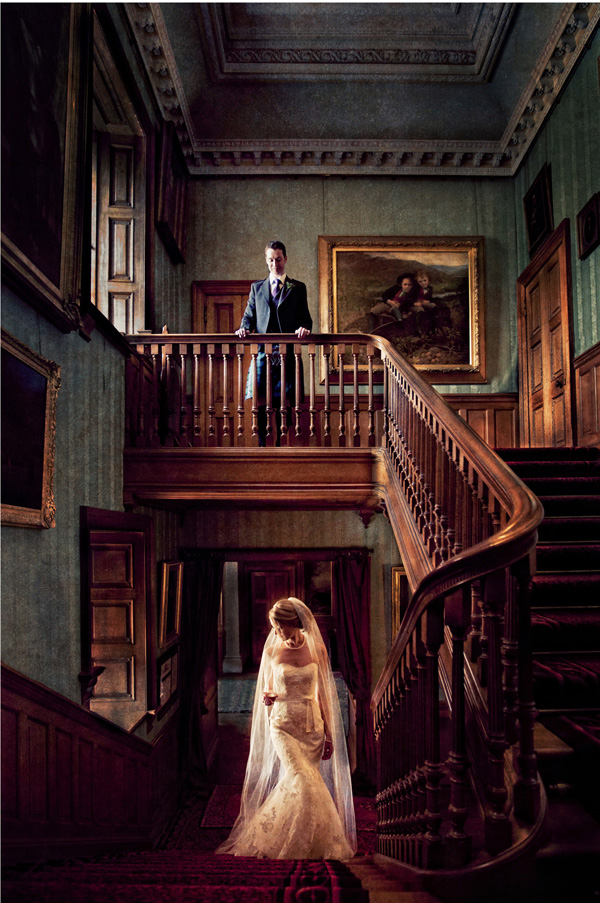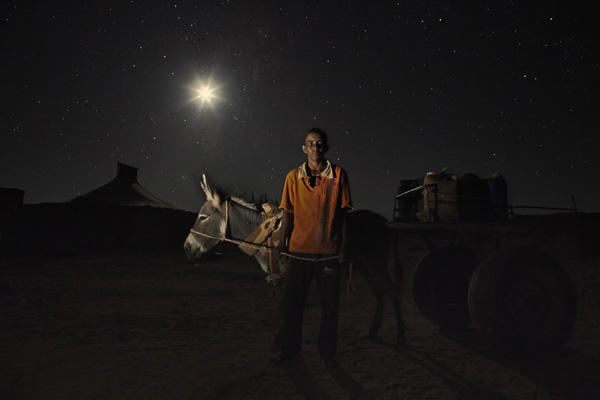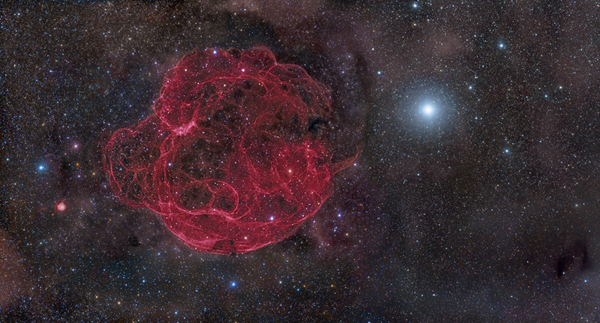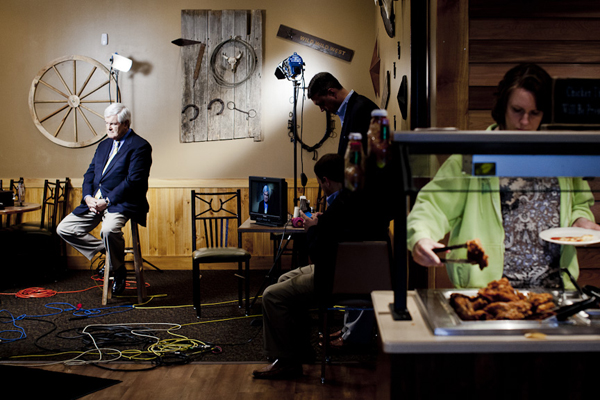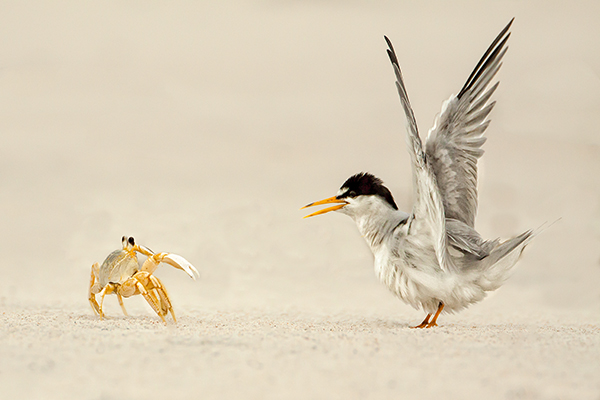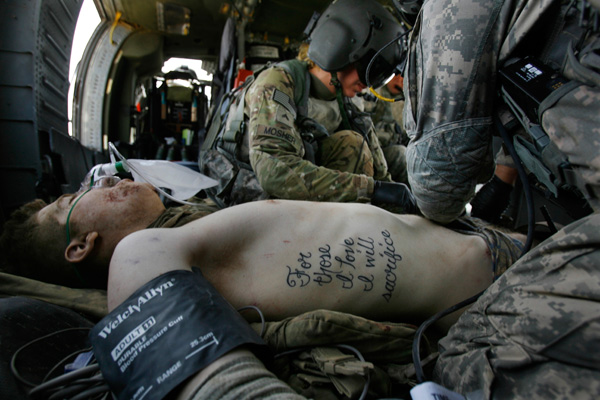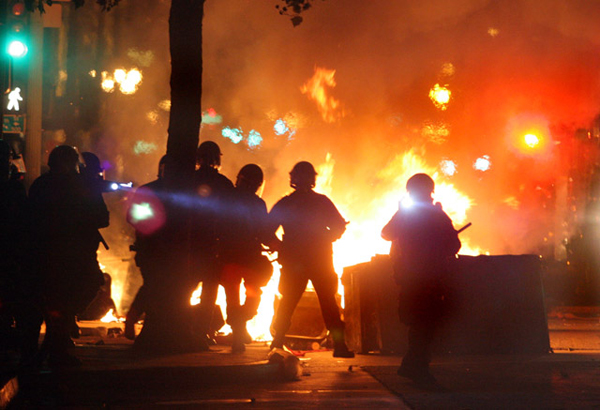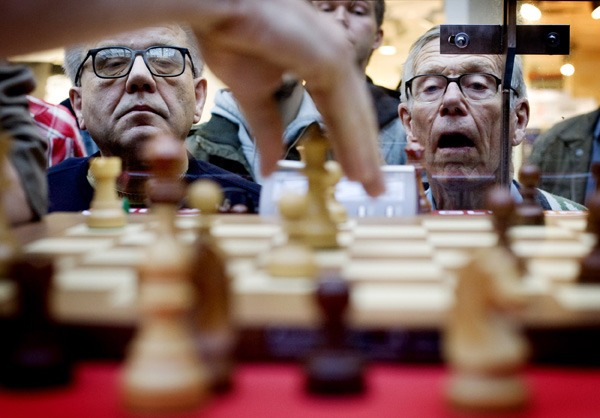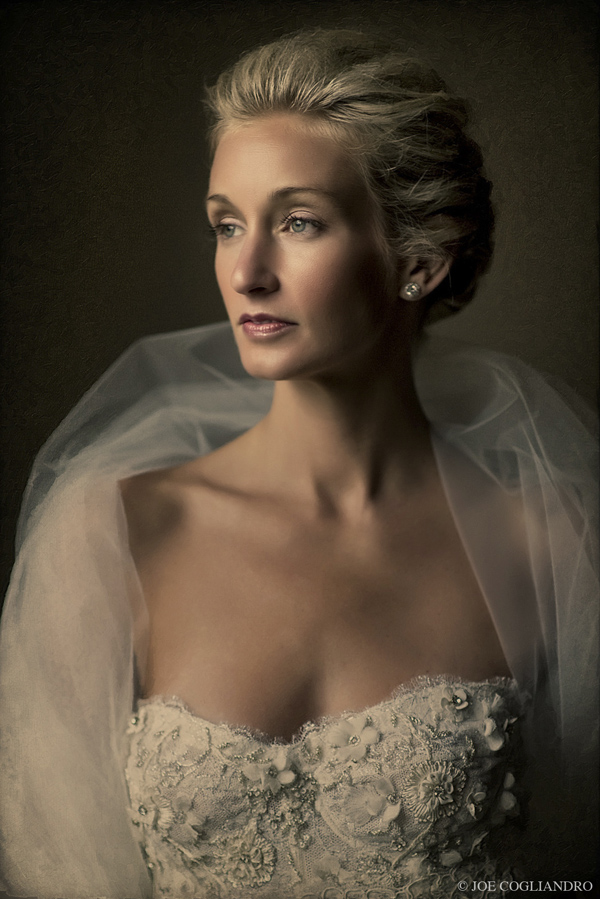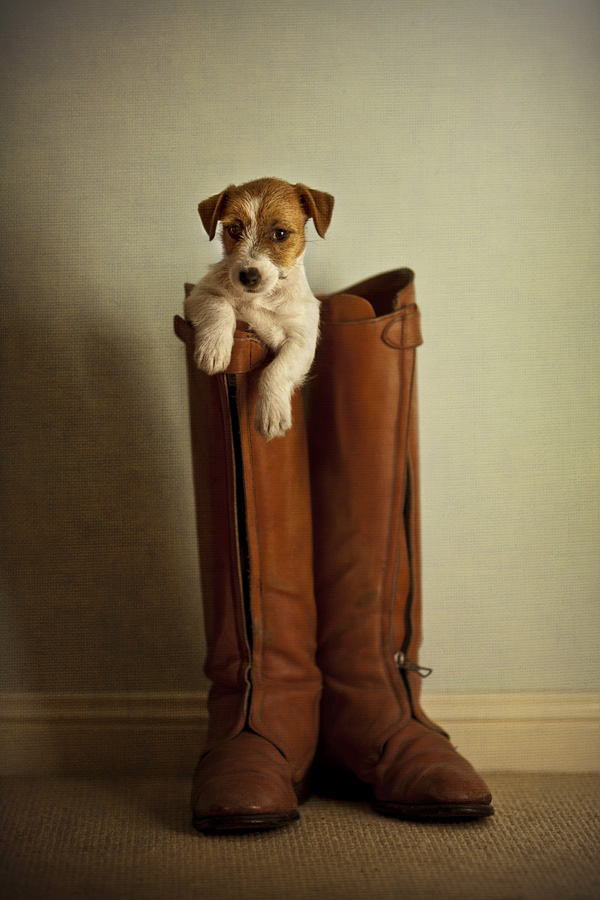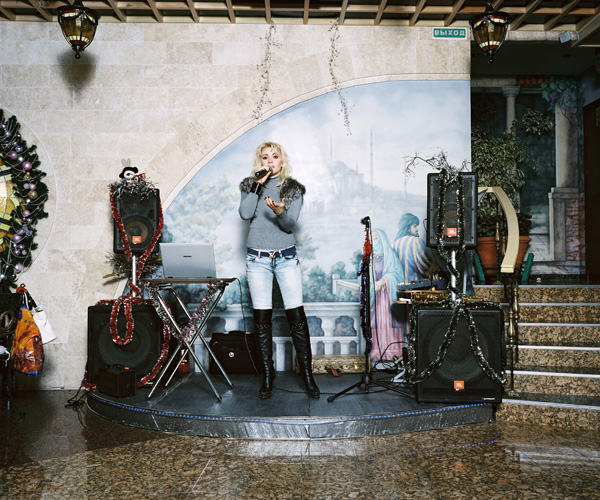Share
Are Photography Contests Worthwhile or Worthless? Part 2
In a blog post last fall, we asked: Are Photography Contests Worthwhile or Worthless? After researching some of the industry’s most popular cont...

In a blog post last fall, we asked: Are Photography Contests Worthwhile or Worthless? After researching some of the industry’s most popular contests (World Press Photo, International Photography Awards, etc.), we graded on them on a scale – “A” being worthwhile, and “F” being worthless.
There are hundreds of photo contests out there, so we’re at it again with another 10 competitions on the judge’s table. Here’s our take:
MPA Wedding & Portrait Awards
Entry fees: £2 per image (£1 of which is donated to the PACE Centre in the UK to help children with physical disabilities).
Prizes: 5 finalists from two categories (weddings and portraits) receive a £50 shopping voucher and certificate; the overall winner wins £1,000 and a trophy.
Promised exposure: Published on the Master Photographers Association website.
What the winners say: Scotland-based wedding and portrait photographer Nicholas Frost, who was a 2012 finalist in the Wedding Day Celebration category, says, “Personally, awards help motivate me. It is a stamp of approval by your peers that you are doing something right and maintaining high standards in your work…Overall as a photographer you can get engrossed and self absorbed in your own work – being critiqued is perhaps the best way to improve.”
Verdict: C. The entry free is small, and it’s great that half of that goes to charity. You don’t have a lot to lose for such low cost and a chance to win £50-1,000 (though it’s unclear what your “shopping voucher” is good for), but then again, it’s not a huge prize at the end and potential exposure seems minimal.
Aperture Portfolio Prize
Entry fees: $25 (must also be current, paid subscribe of Aperture magazine)
Prizes: First prize winner receives $3,000 and has his/her work exhibited at the Aperture gallery in New York.
Promised exposure: First prize winner and five funner-ups are featured on the website; winners are announced in the foundation’s e-newsletter (~40,000 subscribers); opportunity to sell prints through Aperture’s limited-edition print program.
What the winners say: Andrew McConnell, who was a 2011 runner-up, says that the competition helped expose his work to a much wider audience, and generate interest in his prints. “The Aperture website now hosts one of my limited edition prints which is available to art buyers worldwide,” says Andrew. He cautions that photographers should realize that the Aperture Portfolio Prize is granted to those with “innovative, original imagery.”
Verdict: B+. Aperture is a very credible and respected name in the photography industry, so winning first prize is a nice addition to your resume. The contest is also picked up by sources like Media Bistro, Resource Magazine, and Jen Bekman Gallery. The downside is that they essentially make you subscribe to the magazine if you haven’t already.
Astronomy Photographer of the Year
Entry fees: n/a
Prizes: Overall winner receives £1,500; category winner receives £500; category runner-up receives £250; highly commended entries receive £125.
Promised exposure: Exhibition at the Royal Observatory Greenwich in the UK; published in the Astronomy Photographer of the Year book.
What the winners say: Rogelio Bernal Andreo of Deep Sky Colors was runner-up for the Astronomy Photographer of the Year competition for his image of a supernova remnant. Rogelio says that while he would enter again, “One needs to accept that the winning images have a subjective component when they are selected, and that a photo perfectly fit to be a winner in a contest may not ultimately be selected as a winning image by the judges, for reasons that go beyond quantifiable data. If you are okay with that fact, then by all means enter the contest and at the very least, share your work with others through that venue.”
Verdict: D+. You first have to join their Flickr group. Also note that the organizers, the Royal Observatory Greenwich, gain the “non-exclusive, world-wide, royalty-free right to use, reproduce, modify, adapt, and publish in perpetuity, each image entered into the competition.” This includes but is not limited to exhibition displays, promotional press and marketing materials, and planetarium shows which feels more like an opportunity for the museum to add to their image collection. Saved from receiving a lower grade because there aren’t many contests dedicated to astronomy photographers.
The Best of Photojournalism (BOP)
Entry fees: n/a
Prizes: See promised exposure.
Promised exposure: Featured in the online gallery.
What the winners say: T.J. Kirkpatrick took home first place in the News Portrait and Personality category for his image of Newt Gingrich during the run for 2012 GOP nomination. Although he says that he didn’t receive any new client requests after winning, “The award helped my promotional efforts, as I was able to reach out to current clients and colleagues with news of the award.” T.J. also thought entering was a good opportunity to comb through his work from the past year, and self-reflect in an effort to push himself to create even better work. “But it’s important not to place too much emphasis on winning,” he cautions. “Imitating awarded work doesn’t advance photography or our understanding of the world, and creating work in order to win contests is dishonest to the subjects of the photos.”
Verdict: C. There are so many different categories in the NPPA’s contest (160+ in the Still Photography division alone) that it dilutes the distinction of receiving first place. Still, the NPPA is a widely respected organization.
International Emerging Artist Award
Entry fees: $45
Prizes: International exhibition road show in Dubai, Singapore, Istanbul, and Marseille; invite to attend the prize presentation in Dubai; invite to participate as a jury member in next year’s competition.
Promised exposure: First place gets a media feature in New York Times Style Magazine (T.Emirates) and profile feature on the International Emerging Artist Award’s website. Second and third place winners get their work displayed at the prize presentation in Dubai and the website’s gallery.
What the winners say: Julie de Waroquier won the Emergent Artist Award in the 2011-2012 edition, and says that it gave her “the opportunity to travel very far (Dubai), to a country in which the artistic world is very dynamic. I met many people that are involved in this area whom I would have never met alone. It was also the opportunity for a foreign and beautiful solo exhibit. Overall it gave me more confidence as well as credibility as an artist.”
Verdict: D. If your market is contemporary art galleries in Asia and the Middle East, this might be a worthwhile competition for you. Otherwise, the audience probably isn’t going to be one that helps promote your work. Also note that winners hand over exclusivity rights for the duration of the road show.
Your Best Shot (Digital Photo magazine)
Entry fees: n/a
Prizes: Grand prize winner receives: $1,000 cash, Tamrac’s Evolution 9 photo backpack, Gitzo tripod, PNY flash memory card, strobist lighting kit from LumiQuest; 16×20 print of the winning photo. First place winner receives a Tamrac camera bag; Manfrotto tripod, PNY flash memory card, bounce lighting kit from LumiQuest, 16×20 print of winning photo.
Promised exposure: Publication of winning photo in Digital Photo magazine and the online winner’s gallery.
What the winners say: Grand prize winner Kristina Varaksina saw a jump in traffic to her website and Facebook page after winning Digital Photo‘s contest. As a recent winner, other benefits of winning remain to be seen.
Central Florida-based photographer Michael Libbe was the First Place Winner in this year’s contest, and says that he would definitely recommend other photographers enter. “The confidence boost in having a winning image is tremendous. The feeling of knowing your work is recognized by photography professionals that don’t know you personally is quite rewarding.”
Verdict: B. Digital Photo magazine has over 74,000 subscribers, so your work is likely to be seen by a nicely sized audience. But note that they hold several contests throughout the year, so it’s not entirely special. Also beware the rights grab, which is not too different from other photo contests (and ideally would help garner awareness and interest in your work): “irrevocable, royalty-free, non-exclusive, worldwide perpetual license to use the entry and his/her name, city and state of residence for credit purposes in Sponsor’s online galleries, without further compensation, notification or permission”.
The Sigma Delta Chi Awards
Entry fees: $60 for members of the Society of Professional Journalists (SPJ); $100 for non-members.
Prizes: See promised exposure.
Promised exposure: Featured on the online gallery and Quill magazine by SPJ.
What the winners say: Laura Rauch holds the Sigma Delta Chi awards in high regards, saying that they are part of “old school” journalism. She also sees contests dedicated to journalism as a way to bring attention to a variety of issues. “I think photojournalists often enter contests to gain notoriety for subjects they care about and want others to understand,” says Laura. “And that was certainly the case for this image. The young soldier in this image lost both legs and an arm in the service of his country [in Afghanistan]. I want Americans to be invested in the people they ask to go war, to understand their sacrifices and, most importantly, to take care of them when they come home.”
When Oakland Tribune staff photographer Ray Chavez‘s photo won in the Breaking News Photography (circulation 1-100,000) category, he instantly received letters of congratulations from his friends and colleagues. He also received a bronze medal and plaque. The Oakland Tribune paid for Ray to travel to Washington, D.C. to attend the awards benefit. “Seeing my award-wining photo on the cover of the magazine Quill is also a plus,” says Ray. “The award looks great on my resume, and of course, I got the satisfaction that my photo was historical in nature.”
Verdict: C+. The Sigma Delta Chi Awards have been around since 1932, so there is some prestige to be considered. Still, $100 is a high price to pay for a contest that covers everything from photography to reporting to radio. Prepare to get lost in the crowd.
The Open
Entry fees: Tiered pricing – $16 for one image; $21 for two; $24 for three; $35 for five; $48 for ten.
Prizes: $10,000 for Photographer of the Year; $3,000/each for 5 category winners.
Promised exposure: Every entrant is encouraged to create his/her own Artist’s Page, which includes a bio, contact info, and links to your website and social media. Visitors to The Open’s site click the entries to “like” their favorites, and the most liked images are continually pushed to the forefront.
What the winners say: The Open’s Photographer of the Year 2012 was Lorenz Holder, who specializes in snowboard photography, and won $10,000. “But I’ve not been booked more times due to the fact that I’ve won,” says Lorenz. “Winning doesn’t always mean that your work is more sought out than before.” Would he enter the competition again? Sure, he says. “If you don’t take it too seriously and just do it for fun, then you should definitely send in your work.”
Verdict: A-. The Open has an interesting, very social aspect that encourages photographers to share their Artist Pages and get more “likes” so they can move up in the ranking. The Open also claims to have a database of 50,000+ creative industry professionals who use them to source new talent. On top of that, you can sell your photos through their partnership with FotoMoto. It’s a very robust contest, and the $10k grand prize money isn’t half bad either.
Google Photography Prize
Entry fees: n/a, but you must be a student.
Prizes: Grand Prize winner receives an exhibition at Saatchi Gallery in London, and a photography trip to the destination of his/her choice with a professional photography coach; top 10 finalists’ work is shown at Saatchi Gallery for two months; top 100 entries win a Samsung Galaxy Nexus phone.
Promised exposure: Exhibition at Saatchi Gallery, London; displayed in an online gallery on Google.
What the winners say: Swedish student photographer Viktor Johansson‘s series of diver Christoffer Eskilsson won last year’s Grand Prize, which focus on “the long, lonely hours of repetitive training and practice that it takes to excel in your field.”
As the Grand Prize winner, Viktor had the chance to choose any photographer in the world and spend one week with that person as a mentor. “I got to spend one week with Martin Schoeller in the US.,” says Viktor. “Being with such nice and professional photographer made me realize that this is what I want to do. To get recognized, and having people outside your inner circle comment on your work is great. I was very motivated to continue and go out and create something new and better!”
Oslo University College student Kyrre Lien, who has since graduated, was a finalist in last year’s competition. He says that since the competition is free to enter, and the prizes are great, he encourages other students to enter. “The greatest benefit was how much press the nomination got in Norway,” says Kyrre. “I was featured in a couple of newspapers here and, for a freelancer, that is always a good thing when your name is out there.”
Verdict: C. This competition is open to student photographers only, and seems to be largely European focused, based on the judges panel. You must also have a profile on Google+ to enter. Take note that by entering, you grant Google and it’s third-party vendors “a non-exclusive, perpetual, worldwide, royalty-free license to modify, rearrange, copy, reproduce and adapt the images only to fit the format required for product web pages and marketing materials.”
WPPI Awards of Excellence 16×20 Print Competition
Entry fees: $40 per entry for WPPI members; $60 per entry for non-members.
Prizes: Grand Award receives a $2,000 cash prize, a complimentary pass to the WPPI Conference & Expo, and complimentary entry into the Awards of Excellence Print Competition.
Promised exposure: Recognized during the WPPI awards ceremony; press release to publicize your winning efforts; featured in online gallery.
What the winners say: Houston-based wedding and portrait photographer Joe Cogliandro took home the Grand Award in the Wedding Division last year. It was a goal of Joe’s to win the award since he first attended WPPI in 2007. “The process of culling, envisioning, and creating work that my peers would feel is exceptional drove me down a different road of quality than that of my clients,” says Joe. “It is easy to create work that my clients will love, but to create work that the best of the best of my peers in this industry worldwide would consider the best is a whole other process.”
“The wonderful thing about WPPI print competition is that the judging is done live,” adds Joe. “This gives you a chance to actually hear what some of the best photographers in the world have to say about people’s work. It is like having 8-10 hours of live critique.”
Alicia Adamopoulos, who won first place in the Animals/Pets category, agrees: “For me the major benefits are my personal and professional development,” she says. “I use competitions to challenge myself to put forward the best examples of my work that I possibly can and each year I try to improve on previous efforts.”
Australia-based photographer Andrew Campbell won the Grand Award for Portraiture in 2012, and was also a winner in the Individual Portrait category. He believes that the WPPI Awards are worth entering because it’s an opportunity to measure your standard of work against others. “As many of us work in isolation, these contests provide an ideal vehicle to measure ones’ work standard within the photographic industry,” he says.
Verdict: B+. If you plan to be at WPPI, then this is a worthwhile competition to see your work judged on-site. Remember that conferences like WPPI largely target photographers themselves, not clients, so your work will likely be seen by colleagues rather than prospective clients (still a great opportunity to have your work peer reviewed). $2,000 is a nice cash prize, but you also grant WPPI, Rangerfinder and AfterCapture magazines right to publish your photos without further compensation.
Sony World Photography Awards (Professional Competition)
Entry fees: n/a
Prizes: Winner of the “L’iris D’Or” receives title of “Sony World Photography Awards Photographer of The Year”, $25,000 cash prize, membership for the World Photography Academy, digital SLR camera equipment from Sony, coverage to attend the Sony World Photography Awards. Winners of each individual category receive coverage to attend the Sony World Photography Awards and digital SLR camera equipment from Sony
Promised exposure: Exhibited at the Somerset House in London; published in the winners book; featured in online gallery; opportunity to be represented by the World Photography Collection.
What the winners say: Rob Hornstra was 2012’s winner of the Arts & Culture category, and says that he would definitely recommend photographers enter the Sony World Photography Awards. “Always submit your work to contests and apply for grants if they offer a chance on significant exposure or significant resources,” he says. Rob received a lot of attention for The Sochi Project, which sells his books and prints in collaboration with writer Arnold van Bruggen (they were recently featured on CNN Photos).
Germany-based photographer Peter Franck, who was a finalist in the Campaign category, says, “After winning, numerous opportunities to exhibit arose, and I received interview requests from magazines in Italy, Germany, and more. An exhibition of the work was shown at interesting places all over the world and thus made it accessible to a large audience.”
On another note, Polish photographer Jacek Kusz – who was a finalist in the Nature & Wildlife category – says that he received little boost in sales after the winners were announced. “I was hopeful that after winning it would be easier to publish my pictures. But it’s not,” he says.
Verdict: A. The World Photography Organisation is one of the top communities in the photography world, and winning its grand prize is a very notable accomplishment. Winners are typically covered by media outlets like The Atlantic, Washington Post, Telegraph UK, Mashable, and many more.
Next up: What contests should be brought to the judges table next?
